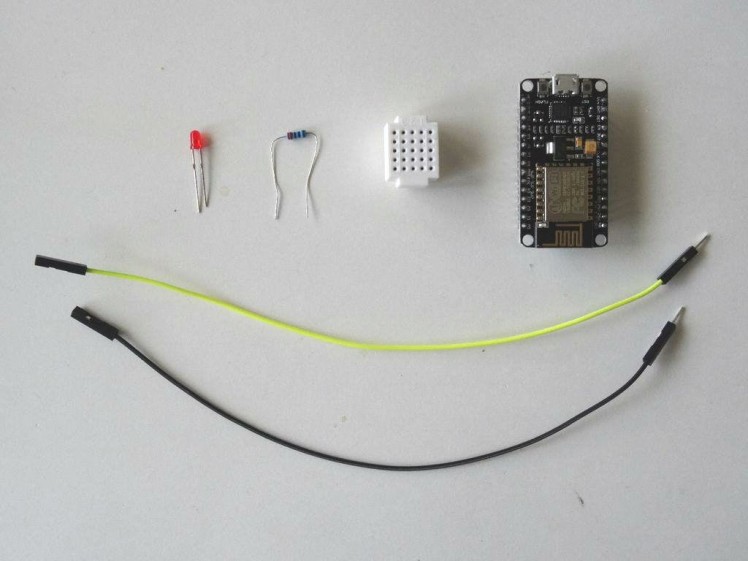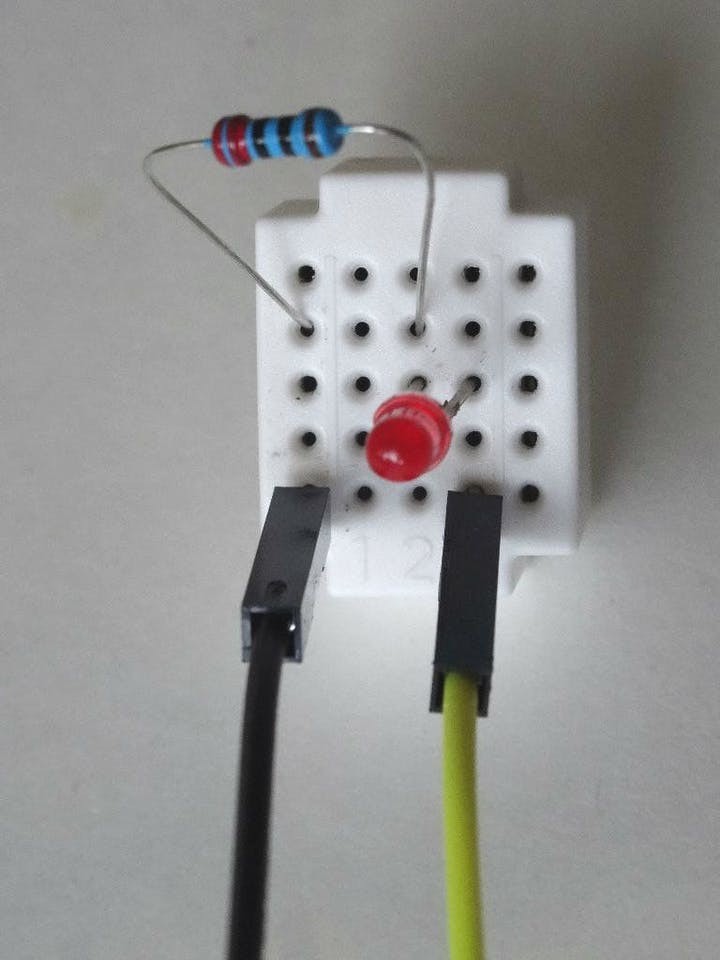Items used in this project
Software apps and online services
Story
In my previous ESP8266 Tutorial, I showed you how to prepare the Arduino IDE to program ESP 8266 modules. In this Tutorial I will show you how you can program the ESP 8266 with Visuino. It is a tradition to start with a Blink project, so we will do a Blink with ESP 8266.
Step 1: Components

- One ESP8266. (I used NodeMCU 1.0, but other versions will also be fine)
- One LED
- One 220 Ohm Resistor
- One Breadboard (I used a Small Breadboard but any other is just fine)
- 2 Female-Male jumper wires
1 / 4 • Picture 1

Picture 1

Picture 2

Picture 3

Picture 4
- Place the 220 Ohm Resistor on the Breadboard as shown on Picture 1
- Connect the Place the LED on the Breadboard so the Cathode end (the shorter one) is connected to one end of the Resistor (Picture 2 and 3)
- Connect Ground wire (black wire) to the other end of the resistor (Picture 4)
- Connect "LED wire" (yellow wire) to the Anode (the longer end) of the LED (Picture 4)
1 / 3 • Picture 1

Picture 1

Picture 2

Picture 3
- Connect the other end of the Ground wire (black) to the Ground pin of the ESP8266 module (Picture 1)
- Connect the other end of the "LED" wire (yellow) to the Digital pin 2 of the ESP8266 module (Picture 2)
- Picture 3 shows where are the Ground and Digital 2 pins in the NodeMCU 1.0 that ware connected on this step
1 / 2 • Picture 1

Picture 1

Picture 2
To start programming the Arduino, you will need to have the Arduino IDE installed from here: http://www.arduino.cc/.
Please be aware that there are some critical bugs in Arduino IDE 1.6.6.
Make sure that you install 1.6.7 or higher, otherwise this Tutorial will not work!
If you have not done follow the steps in this Tutorial to setup the Arduino IDE to program ESP 8266!
The Visuino: https://www.visuino.com also needs to be installed.
- Start Visuino as shown in the first picture
- Click on the "Tools" button on the Arduino component (Picture 1) in Visuino
- When the dialog appears, select "NodeMCU ESP-12" as shown on Picture 2
1 / 2 • Picture 1

Picture 1

Picture 2
- Type "puls" in the Filter box of the Component Toolbox then select the "Pulse Generator" component (Picture 1), and drop it in the design area
- Connect the "Out" pin of the PulseGenerator1 component to the "Digital" input pin of the "Digital[ 2 ]" channel of the "NodeMCU ESP-12" component (Picture 2)
1 / 2 • Picture 1

Picture 1

Picture 2
- In Visuino, Press F9 or click on the button shown on Picture 1 to generate the Arduino code, and open the Arduino IDE
- Select the ESP8266 board type, and serial port as described in this Tutorial
- In the Arduino IDE, click on the Upload button, to compile and upload the code (Picture 2)
1 / 3 • Picture 1

Picture 1

Picture 2

Picture 3
If you power the ESP8266 module, the LED will start blinking once a second as shown on Picture 1 and 2, and on the video.
Congratulations! You have completed your first ESP8266 project with Visuino.
Also attached is the Visuino project, that I created for this Tutorial. You can download and open it in Visuino: https://www.visuino.com
































Leave your feedback...